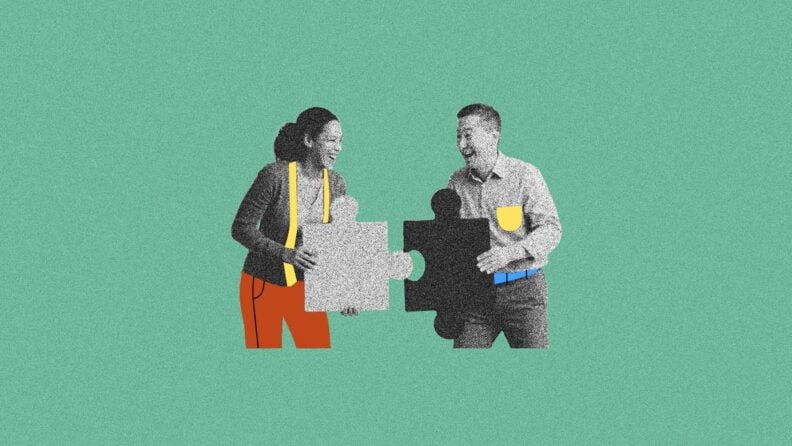Engagement Isn't Just HR's Job: Employee engagement should be a collective responsibility across the organization, with HR facilitating and amplifying employee-driven initiatives instead of solely owning the process.
Rituals: The Secret Sauce to Belonging: Engagement can be fostered through intentional rituals that teams create, nurturing camaraderie and belonging while making the workplace more enjoyable.
Notice Engagement, Don’t Generate It: Recognizing and appreciating existing engagement practices within teams allows companies to enhance their culture, rather than imposing new initiatives from the top down.
On the never ending list of things to own and get done, there is this one big item called employee engagement that presents a never ending challenge.
It’s so vague, broad, and hard to tackle, that it is really hard to wrap our heads around what it even means to work on employee engagement.
We have surveys to measure it, we send them religiously, but what to do in between those surveys in order to inch up our scores ever higher and higher, remains a mystery. There is no proven recipe because when it comes to all things people, every team, every company, every culture is different.
And one thing stands above all - it feels daunting for a person, or a team, to tackle such a big topic that touches every single person at the company. Especially since it requires action and participation from everyone, not merely filling out a form, or submitting their expense receipts.
So, in an effort to move the engagement needle up, we try things like birthday and service anniversary celebrations, all hands with a twist, team building activities, and sending swag to employees. It all comes from one group to many, making the HR team the sole energy behind the employee engagement engine.
Reframing Engagement: From Ownership to Observation
What if we considered employee engagement as a concern owned by the whole organization, with HR being the facilitator and amplifier. If we take that approach, the definition of engagement flips: engagement, then, doesn’t need to be invented, it needs to be noticed.
But, what is it that HR can notice? I believe the answer lies in rituals, intentional practices individuals and teams engage on a regular basis that create belonging, a sense of camaraderie and team spirit.
Small things that build belonging
Rituals are how teams come together. Sports teams warming up to the exact same playlist every time, teams starting or ending meetings with a joke, reacting to an announcement shared at all hands with emojis. All those are rituals: actions that we intentionally engage in at some interval that we consciously choose every time. Their absence would be noticeable.
Rituals get started at individual and team levels all the time. The custom emoji in Slack, the meme shared with the team every Friday, the email the CEO sends once a week. All those are rituals that require no telling or involvement from HR, and are actually how you engage people.
Rituals are how people engage
The best way to drive employee engagement is for people to engage in ways they find meaningful. Engagement is not passive - to engage is an act by each and every one of us, a choice we make to show up, say something, start something, do something.
Values are what your company stands for, but rituals are how they come to life.
For example, a company I used to work at had a value of ‘hold to authenticity’, and one of the rituals that helped live that value was sharing appreciation at the weekly all hands meeting. When someone helps you or does something awesome, share it with everyone. It’s authentic, it is meaningful.
The best rituals, meaning rituals that actually mean something, are the ones that people start from the ground up because they want to, because they mean something to them.
Real World Rituals
One of my favorite sports moments is watching the New Zealand All Blacks rugby team perform the Haka before every match. It gives me goose bumps!
They do it religiously as a way to mentally prepare to face the opponent, to remember they are standing on the shoulders of giants, and to come together as a team. I don’t know the full origin story of the haka, but I doubt their coach or general manager told them to do it to ‘engage and motivate’ them.
It sounds ridiculous just to think about it. I think it is way more likely that one or two players started doing it, the team liked it, and they decided to perform it together.
If you’re looking for something more office than field, I’ve seen examples of that in action as well.
Demo & Donut Fridays
A friend of mine told me about a weekly team tradition at his company that came out of their product and engineering teams.
Every Friday morning, the product team gathers for a short, informal “Demo & Donuts” session. One or two people demo something they built. No slides, no polish needed. Wins, failures, weird bugs, all welcome.
Meanwhile, someone brings donuts or bagels or gourmet coffee, whatever the flavor of the week is. There’s laughter, shared learning, and a celebration of progress—big or small.
This started not as an HR initiative, but when a junior engineer once brought in pastries to lighten the mood after a tough sprint. A few people liked it, so they kept doing it. Someone said, “We should show off what we worked on, too.” And just like that, a ritual was born.
The Engagement Strategy Already Happening
As HR, you don’t need to be the creator of these rituals. You can’t possibly know all the different ways people want to engage. But, you can become a facilitator - a ritual spotter and amplifier.
Notice the ways people build rituals at team and department level. See how they are going, be curious about them, and ask them if they’d be willing to extend it to other teams, or even the whole company.
You don’t need to own every ritual. Ask for help, ask for that person/team to own it. And guess what happens: they will engage. They won’t become engaged, they will engage. And you know which one is more powerful, right? Active vs passive, it’s the stuff of elementary school English.
Find ways in which people want to engage. Then help them amplify it.
And just ponder, what if your best engagement strategy was already happening: quietly, joyfully, without your permission?
What's Next?
Want more insights and advice from leaders in HR? Sign up for the People Managing People newsletter and you'll get all the latest interviews, insights, opinions and analysis straight to your inbox.




